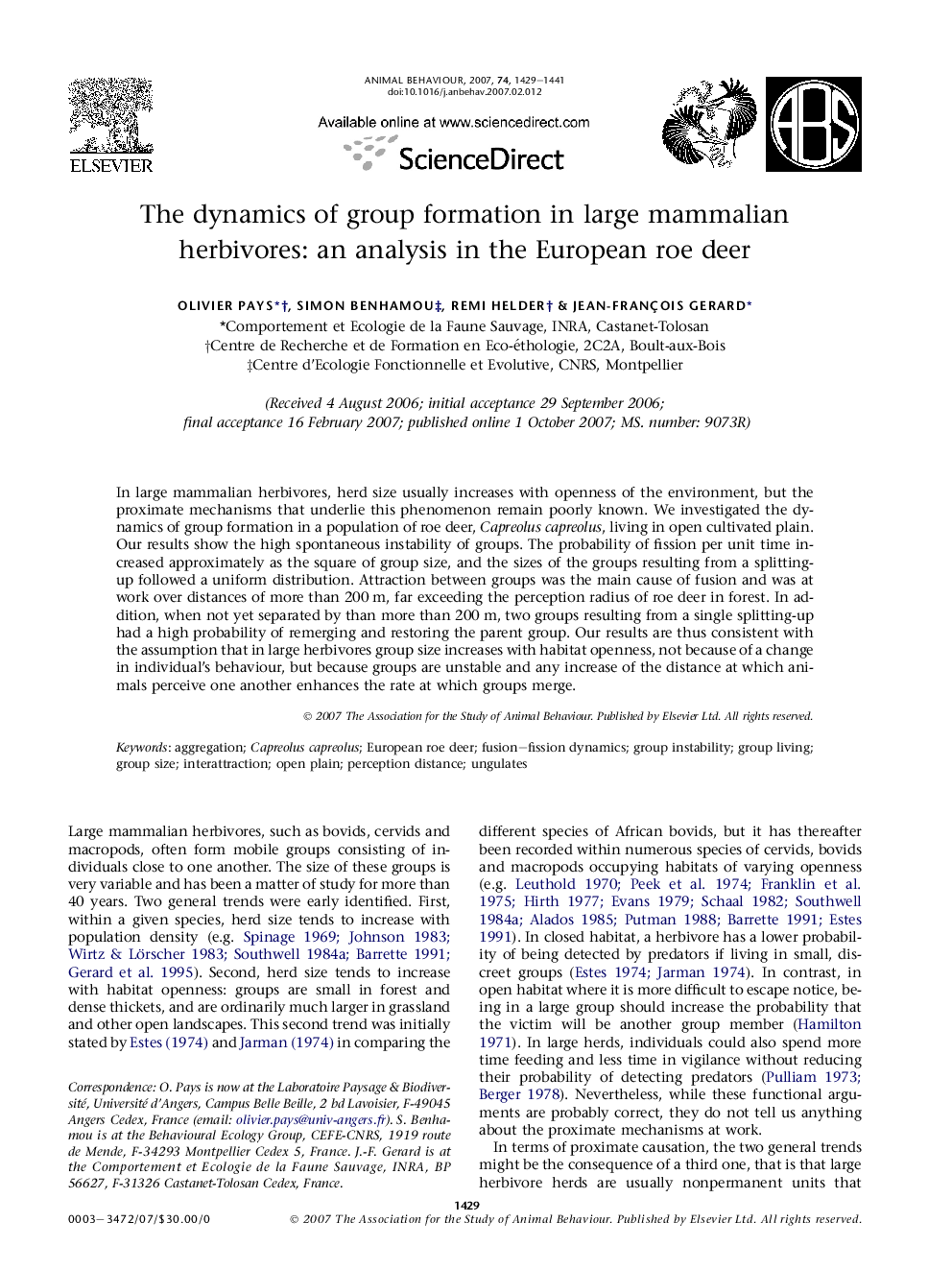| کد مقاله | کد نشریه | سال انتشار | مقاله انگلیسی | نسخه تمام متن |
|---|---|---|---|---|
| 2418298 | 1104342 | 2007 | 13 صفحه PDF | دانلود رایگان |

In large mammalian herbivores, herd size usually increases with openness of the environment, but the proximate mechanisms that underlie this phenomenon remain poorly known. We investigated the dynamics of group formation in a population of roe deer, Capreolus capreolus, living in open cultivated plain. Our results show the high spontaneous instability of groups. The probability of fission per unit time increased approximately as the square of group size, and the sizes of the groups resulting from a splitting-up followed a uniform distribution. Attraction between groups was the main cause of fusion and was at work over distances of more than 200 m, far exceeding the perception radius of roe deer in forest. In addition, when not yet separated by than more than 200 m, two groups resulting from a single splitting-up had a high probability of remerging and restoring the parent group. Our results are thus consistent with the assumption that in large herbivores group size increases with habitat openness, not because of a change in individual's behaviour, but because groups are unstable and any increase of the distance at which animals perceive one another enhances the rate at which groups merge.
Journal: Animal Behaviour - Volume 74, Issue 5, November 2007, Pages 1429–1441